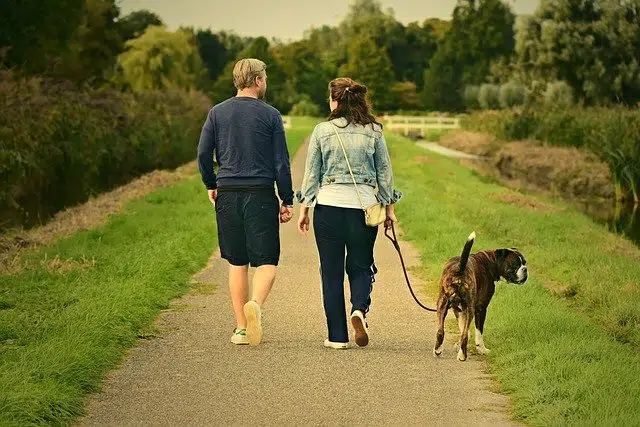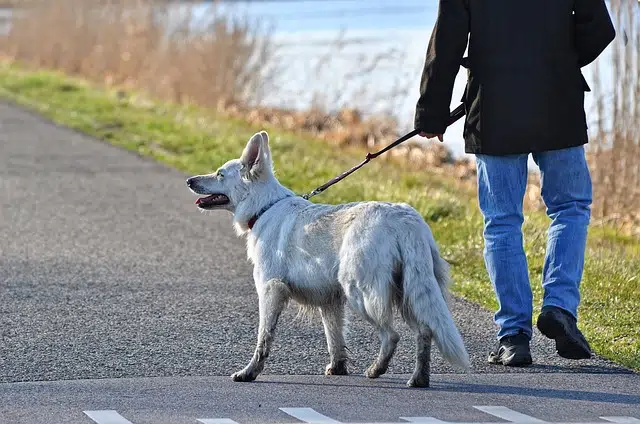Home » Blog » Pet » Pet Parenting Lifestyle » How To Stop A Dog Pulling On The Lead
Categories
Tags
animal welfare
breed profile
buying a car
buying a pet
Car
car accessories
car care
car features
car insurance
Car safety
car sales
car service
cat
cat behaviour
cat body language
Cat Breeds
cat food
cat insurance
comprehensive car insurance
Dog
Dog Behaviour
dog body language
Dog Breeds
dog food
Dog Insurance
dog training
eco friendly cars
Kitten
New Car
pet accessories
pet activities
Pet Adoption
pet breeders
pet days of the year
pet fun stuff
Pet Health
pet insurance
pet parenting
Pet Safety
pet services
Puppy
rescue pets
road safety
road trip
safe driving
Recent Blog:
Facebook Posts
2 days ago
Growing old sometimes means we can’t take care of pets anymore. Find out some advice on what to do when this happens:![]()
![]() Senior Pet Parents – Contingency Plans for Your Pet – bit.ly/44bzwkS
... See MoreSee Less
Senior Pet Parents – Contingency Plans for Your Pet – bit.ly/44bzwkS
... See MoreSee Less
Senior Pet Parents' Contingency Plans for Pets
www.pd.com.au
Sometimes senior pet parents need more downtime. For older pet owners, this can be tricky to navigate if their dog or cat is full of beans and wants to4 days ago
Before you rev up the engine, let’s run through a checklist of things to do before starting your car. Not only do these steps ensure your safety (and that of others around you), but they also help in maintaining your vehicle's longevity.![]()
![]() Driving Tips: Your Checklist Before Starting Your Car -
... See MoreSee Less
Driving Tips: Your Checklist Before Starting Your Car -
... See MoreSee Less
Driving Tips: Your Checklist Before Starting Your Car
www.pd.com.au
Heading out for a drive? Hold up a second! Whether you're dashing off to work, running errands, or embarking on a road trip adventure, there are a few1 week ago
Are intestinal worms setting up camp in your dog’s gut without paying rent? Here’s how to spot the main culprits and get rid of them too:![]()
![]() Preventing, Identifying and Treating Intestinal Worms in Dogs - bit.ly/43YjCKu
... See MoreSee Less
Preventing, Identifying and Treating Intestinal Worms in Dogs - bit.ly/43YjCKu
... See MoreSee Less
Preventing, Identifying and Treating Intestinal Worms in Dogs
www.pd.com.au
Intestinal worms, such as roundworms in dogs are one of the least glamorous topics on the planet. These intestinal parasites that basically use our dogsThere’s nothing worse than heading out for a nice stroll with your dog, only to be yanked around at top speed for an hour as your dog speeds off, pulling your arms out of the socket as they go. Learning how to stop a dog pulling on the lead is an invaluable skill if you want to do regular (pleasant) walks.
Otherwise, you’ll be exercising your dog without walking for the rest of their lives.
But before we can get to the how, let’s look at the why.
Why is my dog pulling on the lead?
Some people might say a dog is pulling because they’re trying to be dominant, or lead the pack. There’s also a misconception that dogs should always walk behind the owner and those who want to walk ahead are asserting their leadership and showing no respect. This isn’t really true.
In most cases, dogs pull on the lead for one main reason: it works. They’ve learnt pulling gets them where they want to go. It’s simply a habit which has been reinforced (often accidentally) by rewarding the behaviour – that is, your dog pulls and ends up getting their way. This could be because they’re keen to get somewhere or because the surrounds are more interesting than you (sorry!) and they want to investigate them.
Another reason your dog pulls is simply that they’re faster than we are. This is especially true of energetic, fit dogs and bigger breeds. But they’re just excitable and don’t know why you can’t keep up with them.
To stop a dog pulling on the lead, you have to actively teach them to walk alongside you.

How to stop a dog pulling on the lead
There are a few different ways to go about teaching your dog to stop pulling, but they all revolve around one thing: rewarding your dog for being by your side.
Things to remember when walking a dog on the lead
Keep in mind that not every method used to stop a dog pulling on the lead will work for your dog. They all have different characters and experiences, and one training method might suit yours more than another.
Whatever training method you use, keep the below in mind:
- Always start somewhere “boring” for your dog so they focus on you, not the environment. Your home or a place they’re used to is the best option.
- Choose where your dog should walk and stick to it; whether that’s the right or left side, next to your leg, or slightly in front of you doesn’t matter. Just keep it consistent.
- Set aside enough time. It’s important that you set clear boundaries. In the initial stages, this means a 10 minute walk might become a 30 minute walk as your dog gets used to the new rules. So if you’re in a rush, don’t take your dog along.
If you have a puppy, get it right from the start. Here’s our advice on teaching your puppy to walk on a lead.
Be a tree
The first option is to “be a tree.” Every time your dog pulls on the lead, you simply stand completely still and don’t budge until your dog eventually faces you or comes toward you. You then reward them with treats, a stroke, or a toy and start walking again.
Remember not to pull against them actively. Simply stand your ground.
Sometimes, your dog will be too interested in other things to turn and face you, and will just strain at the lead. In this case, you may want to try a different method!
Teaching your dog to follow
Another common training method is to teach your dog to stay next to you before they start pulling. You can even do this without a lead initially.
Simply show your dog a treat and walk a few steps away from them. They’ll likely follow you. Then stop, stand still, and wait for your dog to sit quietly next to you. When they do, give them a treat. You can also pair this with a command, like “heel.”
Repeat this a few times and then try it with the lead, walking a few steps further each time. You can gradually start to test them by turning around, doing it in new places, and increasing the length of time between standing still and treating.

Get the right equipment to stop a dog pulling on the lead
Training is always the best cure, but using the right equipment helps greatly.
Firstly, don’t use a collar. Switch to an anti-pull harness for your dog. This limits their ability to pull you but also means you’re less likely to cause an injury. If you have a dog prone to IVDD, for example, you should always use a harness to limit pressure on the neck vertebrae.
Speaking of IVDD… Did you know pet insurance can offer you cover for illnesses, accidents, and even hereditary conditions (as long as they aren’t pre-existing)? That includes a run-in with another dog in the park or an illness they picked up from eating that discarded KFC you told them to leave alone.
It’s best to take out pet insurance for dogs while pup is still young, before any major health issues emerge. Once you have your policy and know your dog will always have access to healthcare, you can enjoy all those walks and runs worry-free.
Share On:




